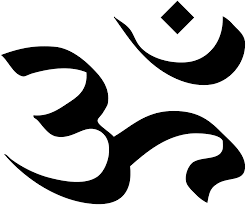4 Introduction

Hinduism is a religious tradition that traces its roots to ancient Vedic hymns and ritual practices of India around 1500 BCE. This early religion, called Brahmanism, was organized around ritual sacrifice and a priestly class who had memorized the hymns and ritual procedures described in the oral literature of the Vedas.
By the sixth century BCE, this ritual tradition had developed a speculative and philosophic set of texts called the Upanishads. The Upanishads reinterpreted the goal of religious practice as an internal transformation of the person. The practice shifted from performing external rituals to an internalized spiritual practice. The methods used were meditation practices, control of physical needs, and rational analysis of the nature of reality. The goal was to realize the unchanging character of the greater Self of the individual which was called the atman. The atman was seen as eternal and identical to the principle of the universe, Brahman.
The Upanishads identified the problem of human life as being caught in the illusion of samsara, the round of birth-death-rebirth. The Upanishads view the atman as eternal. At death the atman is reborn in a new life, based on past actions or karma. Moksha or liberation from this round of birth and death could only be achieved by understanding the identity of atman and Brahman. Yoga, which means union, was a set of variable practices designed to help a person attain liberation.
The term Hinduism refers to a diverse set of beliefs and practices that developed out of the ancient sacrificial cult of the Brahmanic religion and the philosophic ideas of the Upanishads. Other religions of India such as Jainism and Buddhism built on ideas of the Upanishads but rejected the ancient ritual tradition of the Vedas. Hinduism preserved the connection to the ancient sacrificial rituals and its own approach to human transformation.
